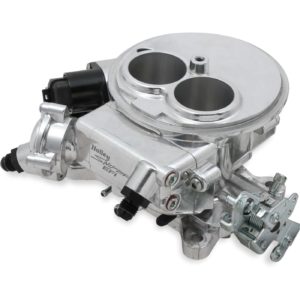The throttle body helps regulate engine airflow, so any issues might lead to decreased performance. Trouble usually starts when dirt and grime clog up the throttle body. The sooty carbon deposits form when the unburned fuel and exhaust gases in the engine bake from the heat.
A clean throttle body is crucial to engine operation, so you must keep yours in great shape.
Types of Throttle Body
Before you start cleaning, you should first identify the type of throttle body your vehicle has.
There are two types of throttle bodies, namely the older style with a throttle cable and a drive-by-wire throttle body. Throttle cables are generally okay for you to clean at home. Drive-by-wire throttles, on the other hand, should only be handled by experts. This is because you can damage the throttle body if you clean or open it by hand.
When to Clean the Throttle Body
Keep an eye out for these signs that indicate it’s time to clean your throttle body.

Dirt and Grime Build-Up
Check the throttle body for dirt and grime regularly. It’s usually under the hood, attached to the intake manifold and throttle position sensor.
The gunk clogs the throttle plate, which shifts its position from where it’s supposed to be. This causes issues since the computer has a predetermined location of where the plate should be.
Problems Caused by a Dirty Throttle Body
If you don’t clean your dirty throttle body, it can cause the following problems:
Low Idle Speed
The average idle speed is 600 to 1000 RPM. Anything below it is considered low and could be a sign of a dirty throttle body. The built-up dirt and residue in the system might be reducing airflow, leading to low idle speed.
Rough Idling
A dirty throttle body can cause rough idling, which is when you feel excessive vibrations when your engine is running but not moving. It could also cause your RPM to fluctuate when your vehicle is stopped.
Rough Acceleration
A dirty throttle body can cause poor air-fuel mixture, preventing the car engine from getting the power it needs from combustion. This usually results in acceleration problems or irregular speed bursts.
Engine Stalling
Limited airflow due to a dirty throttle body could cause engine stalling. Coast-down stalls might also lead to a drop in performance.

Misfires
When the air-fuel mixture is poor, misfires could happen, which is when one or more cylinders don’t produce power or have performance deficiencies. A dirty throttle body can’t supply sufficient air to the engine cylinder, so misfiring often follows.
Poor Fuel Economy
Poor air-fuel mixture caused by a dirty throttle body results in inefficient fuel consumption. You’ll notice the poor economy if you’re refueling more frequently.
High IAC Count
The idle air control (IAC) works with the vehicle’s engine control unit (ECU) to regulate airflow to the engine to ensure smooth idling. A higher-than-normal IAC count could mean a dirty throttle body or plate.
How Often Should You Clean the Throttle Body?
Experts recommend cleaning your throttle body annually or every 75,000 miles. If you notice dirty throttle body symptoms even with regular cleaning, take your vehicle to an auto repair shop for a diagnosis.
What Does Throttle Body Cleaning Entail?
Throttle body cleaning usually involves:
- Disconnecting the intake air tube and opening up the throttle body
- Spraying the part with a throttle body cleaner
- Loosening and removing gunk with a brush and paper towels

Because cleaning the throttle body entails removing other car parts to expose the throttle body, it’s a task best left to mechanics.
What’s the Average Cost of Throttle Body Cleaning?
Expect to spend around $150 for throttle body cleaning, depending on the model of your vehicle and the labor fee.
Can You Clean the Throttle Body Without Removing It?
Yes, you can clean the throttle body without removing it. Simply use a clean cloth or a toothbrush to carefully remove the dirt and grime. However, it’s best to detach it first for a more thorough cleaning process.
Can You Drive With a Dirty Throttle Body?
You can still drive with a dirty throttle body, but it’s not advisable. Once the symptoms show up, you should address them immediately to keep them from getting worse and prevent accidents.
When to Replace the Throttle Body Instead of Cleaning It
You should replace your throttle body only when you need to. This is either when cleaning doesn’t solve any of the issues or the body itself is damaged.
You should replace your throttle body only when you need to.
– Anthony Harlin, ASE Certified Master Automobile Technician
How Much Does a Throttle Body Replacement Cost?
A replacement throttle body costs $10 to $1,900 on parts alone. The price varies depending on factors like brand, quantity, and condition.
The Bottom Line
A clean throttle body is crucial to engine operation, so keep an eye out for the telltale signs that it’s time to clean yours. Make throttle body cleaning a part of your regular maintenance. Not only will it save you money by preventing costly repairs but it will also keep your vehicle performing its best.
Any information provided on this Website is for informational purposes only and is not intended to replace consultation with a professional mechanic. The accuracy and timeliness of the information may change from the time of publication.






























